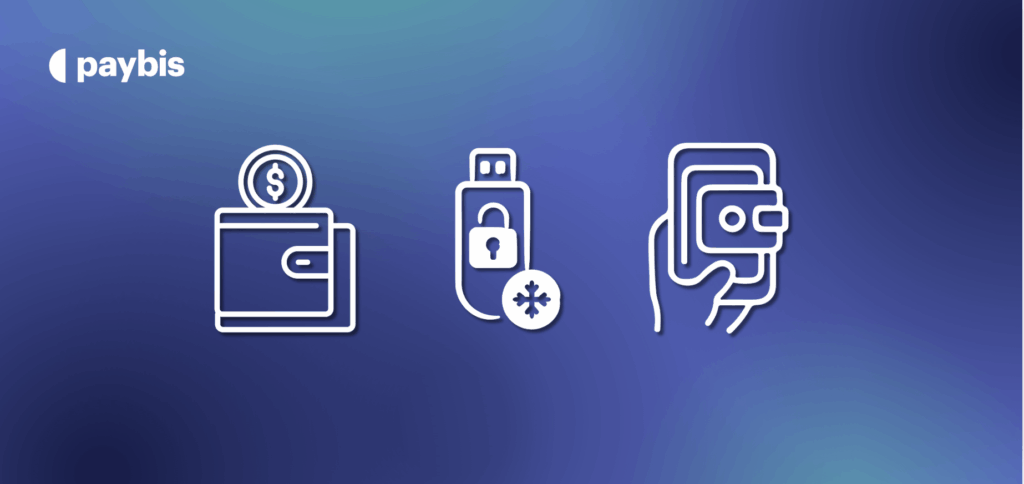The Safest Way to Invest Money & Tips on How to Do So
Have you been sitting on your savings for too long? If so, you might be exploring different ways to invest your money.
Instead of letting your funds depreciate in the bank, consider allocating it in asset classes that can help you grow your wealth. This is by far the best way to use your money in a market full of opportunities.
In this article, we will show you the safest ways to invest money and give some useful tips on building investment portfolio. So keep on reading.
Table of contents
What’s considered a safe investment?
Everyone thinks there is a secret to investing. They keep looking for a risk-free, high yielding opportunity. It’s very difficult to point out investments of that sort. The economy is unpredictable, and so are all markets.
That being said, there are several options that are seen as low-risk investments. These include several different categories, from high-yielding saving accounts to real estate. We will analyze each category further in the following chapters.
But first things first. In order to discover safe investment opportunities, you will need to ensure that they have the following characteristics:
- No wild fluctuations – Less fluctuation means less risk. While most fluctuations do not affect the long-term price objective, they can be very stressful for some investors. This is why Bitcoin, for example, is not seen as a safe investment.
- They should be regulated – Unregulated markets are often manipulated by large market participants. While this is not inherently negative, it does pose several risks. For example, when ICOs became a popular form of (unregulated) investment, a small number of people determined the direction of the market. This resulted in most users making large losses.
- Users must be able to understand them – Even the most complicated investments can become a safe way to grow your wealth. In order to do so, however, you need to have a good understanding of the markets. Therefore, research is very important.
- Preferably, your funds should be insured – The safest investments may not yield high returns but are generally insured by the FDIC up to a certain amount (for US-based individuals). This is great for people that want to have their money work for them, without worrying about it too much.
What is the golden rule of investing
Now that you have a better idea of the background, it’s time to talk about the actual investment process.
In this chapter, we will be pointing out our favorite tips on building an investment portfolio. You will see these “unspoken rules” being mentioned by most successful investors, whether in interviews or in books.
Take a moment to read through them and let them guide you at the beginning of your investment journey.
Invest as early as possible
This one is obviously very hard to do, especially for those with no skin in the game. It can also be seen as recklessness unless you are well-versed in a given industry. Investing in a company at a very early stage can be a rewarding opportunity if you know what you’re doing.
Let’s take Facebook as an example. Back in 2004, Paypal co-founder Peter Thiel invested $500K in the Social Media platform. After cashing out most of his shares in 2019, he turned his initial investment into a little more than $1 Billion dollars.
While these returns are uncommon they are not rare. The plethora of examples has made startup investing a career path, with many successful entrepreneurs turning to it after successfully selling their companies.
Early-stage investing is a pretty smart move to consider, especially for those that have a genuine interest in a particular industry and its outlook in the future. Some of the options you can use to invest new companies include the following platforms:
Take calculated risks based on logic – not emotions
What makes a particular asset worth investing in? If your answer is branding, marketing, and future promises, then you are thinking with your emotions. In this case, it might be better to hold onto your money for a little longer.
Every time you look into new investment options, start by checking (historical) data. How has this option performed in the past? How is the current outlook of the market? What does the market tell us about future demand? All these are good questions to ask yourself when you find an investment that seems interesting.
But logic-based investing doesn’t stop there. You will need to base all your investment decisions on logic and avoid falling into emotional reactions. To do this, you can start observing your feelings and understand what causes particular patterns of behavior.
Don’t invest money you can’t afford to lose
This is very important and ties perfectly with the previous two rules. In order to remain emotionally detached from your investments, you will need to invest an amount that you would feel comfortable losing.
Invest more and you will probably start worrying a little too much. And worry may lead to impulsive decisions. While there are many safe investment options, there will always be risks.
Research before investing
Understanding what you are getting yourself into is very important. This is true for all investment options. In most cases, you don’t want to trust your overly confident friend or a lucky family member. The markets are dynamic, which means that what works today may not necessarily work tomorrow.
To start with, you should select and research a particular asset class. Explore its past performance and see how it reacted to financial downturns. Keep an objective viewpoint and don’t become selective with your research. The more you know, the more confident you will feel with your final decision.
Diversify your portfolio
It is no surprise that most successful investors have a high degree of luck. The majority built their wealth in one industry – maybe even through a single investment.
But that’s not how their wealth is preserved. This happens by spreading your funds in different asset classes.
The safest way to invest money and protect your wealth is through diversification. Explore all the different options available and, based on your risk tolerance, asses the structure you want to follow.
Ideally, you’d want to invest the majority of your funds in low-risk, low-return investments, such as high-yielding savings accounts or real estate.
Then, use only a small amount of your money to invest in high-risk, high-return assets. If the latest end up performing well, they will grow into a significant % of your portfolio.
We have previously written on the importance of diversification and gave several examples of the types of investments you can make.
Building an investment portfolio from scratch
So, how do you build an investment portfolio? There are several steps you need to follow in order to understand what kind of structure works best for you and start investing.
Step 1: Planning your investment strategy
The first thing you need to do in order to build your portfolio is to assess the amount you are able to invest and your long-term goals.
Other basic considerations include how long you plan to allocate your money and how tolerant you are to risk. Are you able to remove your emotions from the decision making process? Are you prepared to be patient for several years? If not, you might reconsider your choice to invest.
Step 2: Determine which asset classes you want to invest in
There are several ways to divide your capital between different investment options. Once again, these will be determined to your risk tolerance and knowledge of the industry.
- If you want to invest in the safest stock options, read until the end of this post and educate yourself on FANG stocks.
- If you want to invest in a little riskier assets with high potential rewards, read up on Bitcoin and Growth Stocks (explained below).
- Make sure to familiarize yourself with all available assets, including stocks, bonds, mutual funds, ETFs, precious metals, real estate, and cryptocurrency. In some cases, even vintage collectibles can be part of your portfolio.
Another point to keep in mind is the different portfolio structures you can choose to adopt. The more aggressive you choose to go, the higher your potential rewards will be. Here are some basic structures you can choose to follow:
- Conservative portfolio – 30% High-yield savings / 20% low-risk stock options / 30% Real estate / 20% Treasury bonds
- Semi-aggressive portfolio – 30% Cash / 30% growth stocks and index funds / 30% real estate / 10% Bitcoin and other cryptocurrencies.
- Aggressive portfolio – 20% Cash / 20% growth stocks and index funds / 30% real estate / 20% Bitcoin and other cryptocurrencies / 10% early-stage companies or high risk stocks
As you can see, the more aggressive your portfolio becomes, the higher the risk of putting your funds in danger.
Step 3: Analyze and rebalance periodically
A review of your investments is always a good thing to do. However, it doesn’t stop there – you will most likely need to make adjustments on an occasional basis. Once you create a portfolio, you might be following a split that looks like this:
- 60% – Low-risk,low-return options
- 30% – Cash
- 10% – High risk, high return options
Now, imagine what happens if your high-risk investment ends up performing extremely well under good market conditions. The amount you invested multiplies and the split now looks as follows:
- 51% – Low-risk,low-return options
- 24% – Cash
- 25% – High risk, high return options
This is where rebalancing comes in. At this point, you might want to take profits from your high-risk investments and reinvest this amount into safer options. Doing so will help you return to the prior portfolio split you chose to follow.
How to Build an Investment Portfolio
Building an investment portfolio is an excellent way to reduce the risks involved with holding cash and get higher returns than you would if you simply store your savings in the bank.
There are several factors you need to keep in mind when building an effective, low-risk portfolio. This chapter will walk you through each step to help you create a strategy that works for you.
1. Determine how long you plan to hold onto your investments
The first step in any investment portfolio strategy is goal assessment. What do you want to get out of this and how long are you willing to be patient to achieve this?
- It’s best to start with money you won’t need to withdraw for at least 5 years.
- The longer your investment timeframe is, the less emotional you become with short-term fluctuations.
2. Research the assets you plan to invest in
At this point, you might want to search for high-quality resources to help you better understand the investment journey you are about to undertake. Great options to start your research include:
Keep in mind that the safest way to invest money includes spreading it over a large number of options. So even if you find one asset class to be superior to others, never use all your capital to buy into it. In the following chapters, we will share our favorite asset classes.
3. Invest on your own or ask for professional help
Nowadays, investing is as easy as downloading an app. You no longer need to be an industry insider or extremely wealthy. The following apps are a great starting point for basic investment decisions:
- Revolut – Buy stocks, gold shares, and cryptocurrency.
- Acorns – Invest in low-cost exchange-traded funds (ETFs) with your spare change.
However, if you are uncertain about your choices, you can always choose to trust a stockbroker or seek investment advice. These services may come at a cost but ensure that you are using the safest way to invest money.
At this point, you (or your broker) will need to spread your money across the different company shares you want to invest in.
4. Followup and research
The companies you invested in will most likely be affected by economic trends, market sentiment, and other variables.
In the previous chapter, we explain how rebalancing your portfolio can hedge risk even more. Don’t simply invest and forget. The market is dynamic. Make sure you stay up to date by reading the news on popular blogs, forums, and Social media.
Then, make logical choices while keeping your emotions in check.
The safest ways to invest money
Let’s make something clear. The safest way to invest money is not the most rewarding one. The return rates will usually be lower than, for example, the stock market, or cryptocurrencies.
That being said, the options we will list below will help you see definitive returns, without taking any further action.
High-Yield Savings Account
These types of accounts are more rewarding than your typical savings account. Y
- Your funds are insured by the FDIC, and most banks will offer between 2%-2,5% returns per annum.
- Best for: investors that want to avoid all risk and have a high enough capital to see significant returns.
- How to invest: Ask your local bank for the different options.
Certificates of Deposit (CoD)
Certificated of deposit are very similar to high-yield savings accounts. The main difference is that they come with a predetermined “lockup” period.
- If you withdraw funds before that period is concluded, you will need to pay a penalty.
- Best for: Investors that want to keep risk as low as possible and receive a respectable return. They are, however, less liquid, meaning that they are meant for money that will not be used in the short-term future.
- How to invest: Discuss your options with an insured financial institution (FDIC, NCUA, etc.)
Money Market Accounts
These accounts provide higher returns than high-yield savings accounts, similar to Certificates of Deposit.
- The difference is that they allow users to make a set number of payments (or cut checks) each month. As such, they can be considered more flexible and rewarding.
- Best for: Money that might need to be accessed infrequently in order to make payments or withdraw funds.
- How to invest: Ask your local bank for the different options.
Growth Stock Funds
These funds will spread your money across many different growth stocks. Growth stocks, in this case, are companies that have performed very well long-term. They include FANG stocks and other well-known companies.
- Choosing to invest in a set of stock options tapers risk and is considered the safest way to invest money in the stock market.
- Best for: Amateur and experienced investors who want to diversify their portfolio and are able to take on a little more risk for potentially much higher returns.
- How to invest: Contact your broker or download an app to do so by yourself (see information above).
S&P500 Index fund
The S&P 500 Index Fund is comprised of the 500 largest American companies.
- Investing in funds that consist of hundreds of stocks and holding onto them for a long time is both safe and potentially very rewarding.
- Best for: Investors that are able to handle occasional fluctuations and are able to hold onto their funds for a long period of time.
- How to invest: Here is a video that explains everything you need to know about the S&P500, including how to invest:
Wrap-up
If you made it this far you probably understand that the safest way to invest money will not make you rich overnight.
In this article, we explored the following topics:
- What is the safest way to invest money
- What are the golden rules of investing
- How to build an investment portfolio
- And tips on building investment portfolio
We hope you have a better idea of what it takes to be a successful investor and invite you to research each asset class more. Having a good understanding of what you’re getting yourself into is very important.
Frequently Asked Questions
Let’s take a look at the most common questions related to safe investing.
1. How much money do you need to start an investment portfolio?
The best way to start investing is to allocate a part of your savings for your portfolio. For example, you could start with as little as 5%-10% of your salary and gradually grow the value of your portfolio over time.
Keep in mind that this number is highly related to the amount of risk you are willing to undertake and the amount of money you have available.
2. What makes a good investment portfolio?
A good investment portfolio is one that has maximized the opportunity for profit in the safest possible way. And to do this, you will need to consider diversification.
This means that you will have to invest in several asset classes, including blue-chip stocks, bonds, index funds, and real estate.
3. How much money do I need to invest to make $1000 a month?
Assuming the amount should be obtained through passive investing while minimizing risk, there are several options to answer this question.
- Generally speaking, very experienced investors will need to allocate about $50-$70K. These include investors like Warren Buffet who are able to grow their portfolio 10%-20% per year.
- Investors with relative experience will probably need $100-$120K. These include traders that see approximate returns of 8%-10% per year.
- Finally, those that simply what to make their money work for them without any thinking whatsoever will need approximately $250-$300K.
To put this into perspective, you would probably need to store between $800K-$1M in your savings account to receive the same return.
4. What does an investment portfolio look like?
A portfolio is a collection of different investments that have a high potential of preserving and growing one’s wealth. It can contain stocks, bonds, cryptocurrency, real estate, cash, and more.
5. What is a good portfolio return?
The portfolio return, more commonly known as ROI, is dependent on the risk tolerance of the investor. Generally speaking, the higher the risk, the higher the potential rewards.
No risk options such as high-yielding savings accounts can yield anywhere between 2%-2.5% per year. This amount may be small but there is no involvement of the investor for whatsoever.
An annual return of 5.5%-6% per annum is the average for individuals with long-term, low-risk portfolios. These include the structures we described earlier, where a small portion of the investment may be invested in high-risk options.
Experienced investors may raise this number to 8%-10%, while those with tolerance to risk and lots of experience could aim for even higher numbers. For example, cryptocurrency investors often multiply their initial investment multifold by timing the market correctly.
Disclaimer: Don’t invest unless you’re prepared to lose all the money you invest. This is a high‑risk investment and you should not expect to be protected if something goes wrong. Take 2 mins to learn more at: https://go.payb.is/FCA-Info





Hi, Its a wounderful post.Thanks for your nice post. Do you know? Tether’s circulating supply has slipped from about $83 billion a week ago to less than $76 billion on Tuesday, according to data from CoinGecko.